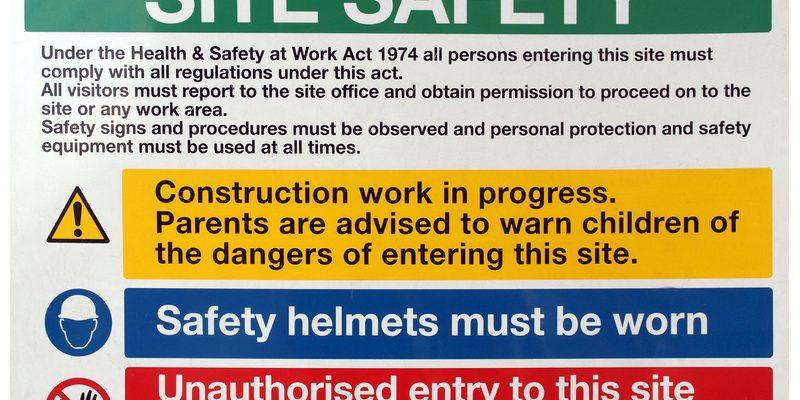In the digital age, where the click of a button can open doors to infinite possibilities, it also, unfortunately, unlocks gateways to unprecedented vulnerabilities. As businesses expand their online presence, they inadvertently become prime targets for a silent predator lurking in the shadows: identity theft. This invisible menace can dismantle years of hard work, tarnish reputations, and drain financial resources faster than you can say ”data breach.” But fear not, for in this labyrinth of cyber threats, there exists a roadmap to fortification. In this article, we delve into the art and science of securing your business against identity theft, equipping you with the knowledge and tools to build an impregnable fortress around your enterprise. Prepare to transform your business into a bastion of security, where every byte of data is shielded by an armor of vigilance and innovation.
Fortifying Your Digital Fortress: Essential Steps to Safeguard Business Data
In today’s digital age, safeguarding your business data is not just a necessity but a strategic imperative. To effectively shield your enterprise from identity theft, start by implementing robust security protocols. Encrypt sensitive data to ensure that even if it falls into the wrong hands, it remains unreadable. Regularly update your software to patch vulnerabilities that hackers could exploit. Furthermore, employ multi-factor authentication (MFA) to add an extra layer of security beyond passwords.
Equally important is cultivating a culture of security awareness among your employees. Conduct regular training sessions to educate them about phishing scams and the importance of strong, unique passwords. Encourage them to report suspicious activities without delay. Consider these proactive measures:
- Implement a data backup strategy to ensure business continuity in case of a breach.
- Limit access to sensitive information to only those who absolutely need it.
- Utilize firewalls and intrusion detection systems to monitor and block unauthorized access.
By taking these essential steps, you not only protect your business from potential threats but also reinforce trust with your clients and stakeholders.

Mastering the Art of Employee Awareness: Training Tactics to Prevent Identity Theft
In today’s digital age, fostering a culture of vigilance among employees is crucial in safeguarding your business against identity theft. Training programs should be designed to not only inform but also engage employees in recognizing and responding to potential threats. Implementing regular workshops and interactive sessions can enhance their understanding of the importance of data protection. Encourage participation through role-playing scenarios and simulations that mimic real-world cyber threats. This hands-on approach not only boosts awareness but also empowers employees to act decisively when confronted with suspicious activities.
Moreover, integrating ongoing education into your company’s routine can significantly reduce the risk of identity theft. Consider the following strategies:
- Monthly Security Updates: Share the latest information on cybersecurity trends and threats to keep everyone informed.
- Phishing Drills: Conduct surprise phishing tests to evaluate and improve employee response to deceptive emails.
- Access Control Training: Educate staff on the importance of strong passwords and the use of two-factor authentication.
- Data Handling Workshops: Teach best practices for handling sensitive information securely.
By embedding these practices into your organizational culture, you not only fortify your defenses but also cultivate a workforce that is proactive in protecting both personal and company data.
The Role of Advanced Technology: Leveraging Tools for Enhanced Security
In today’s digital landscape, the integration of advanced technology is paramount for safeguarding businesses against identity theft. Cutting-edge tools such as artificial intelligence and machine learning are revolutionizing the way companies detect and prevent fraudulent activities. By analyzing vast amounts of data in real-time, these technologies can identify unusual patterns and potential threats with unparalleled accuracy. Moreover, blockchain technology offers a decentralized approach to data security, ensuring that sensitive information is stored in a tamper-proof manner, reducing the risk of unauthorized access.
Businesses can also leverage a suite of cybersecurity tools to fortify their defenses. Consider implementing:
- Multi-factor authentication (MFA): Adding an extra layer of security beyond passwords to verify user identities.
- Encryption software: Protecting data by converting it into a secure format that can only be read by authorized parties.
- Intrusion detection systems (IDS): Monitoring network traffic for suspicious activities and alerting security teams to potential breaches.
- Security Information and Event Management (SIEM): Aggregating and analyzing security data from across the organization to provide a comprehensive view of potential threats.
By embracing these advanced technologies, businesses not only enhance their security posture but also build trust with their customers, ensuring that their personal information remains protected.
Crafting a Robust Response Plan: Strategies for Swift Action Against Breaches
In the ever-evolving landscape of cybersecurity, having a well-structured response plan is crucial for mitigating the damage caused by breaches. Speed and precision are your allies when identity theft strikes. Here are some strategic elements to consider when crafting a robust response plan:
- Immediate Threat Assessment: Quickly determine the scope and scale of the breach. Identify which systems and data have been compromised to prioritize response efforts effectively.
- Communication Protocols: Establish clear communication channels within your organization and with external stakeholders. Ensure that all parties are informed promptly and accurately to maintain trust and transparency.
- Containment Measures: Implement rapid containment strategies to prevent further data loss. This might involve isolating affected systems, deploying patches, or even temporarily shutting down certain operations.
- Recovery and Remediation: Develop a detailed plan for data recovery and system restoration. This should include steps for securing vulnerable areas and preventing future breaches.
- Continuous Improvement: Post-incident analysis is vital. Use the insights gained to refine your response plan, update security protocols, and train your team to handle future incidents more effectively.
By embedding these strategies into your response plan, your business can act swiftly and decisively against identity theft, minimizing impact and fortifying defenses against future threats.





